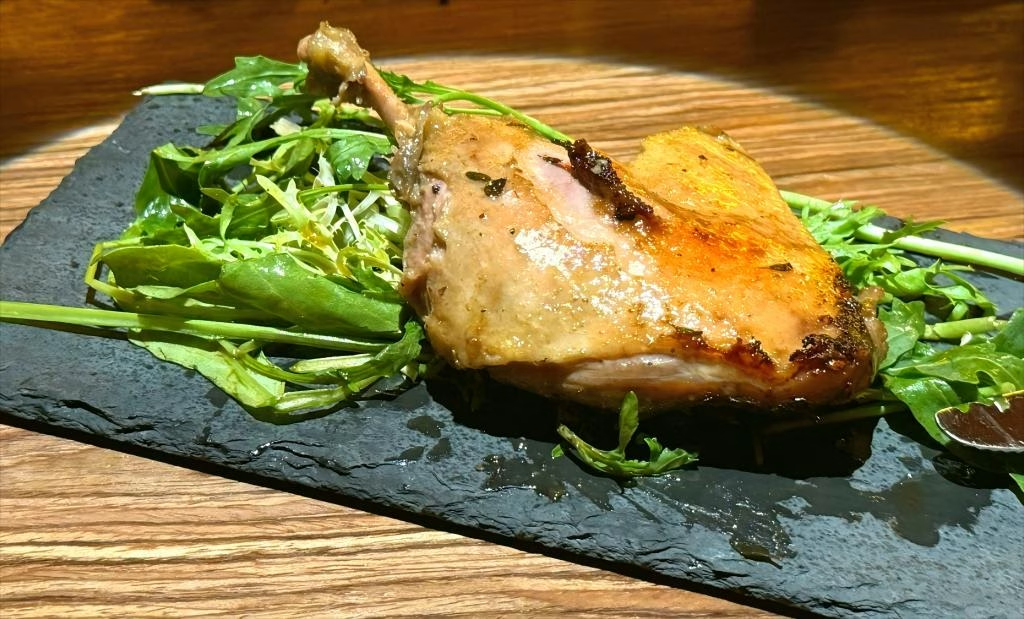Fattening and brining are both cooking techniques for tenderizing meat. Beyond these, French cuisine fans are undoubtedly familiar with the common French dish “Duck Confit,” which uses confit to achieve a tender, juicy, and flavorful finish.
Although a common technique in Western cuisine, it’s actually quite simple to perform.
Confit: A Common Western Technique That Locks in Flavor and Preserves Juicy Meat
Those who enjoy French cuisine are undoubtedly familiar with the term “confit.” “Confit” comes from the French word “confire,” meaning to preserve or pickle. It’s a very traditional method of preserving ingredients. By soaking ingredients in cooking oil, they prevent them from coming into contact with air, extending their shelf life. This technique is used in many French dishes.
Confit can extend the shelf life of ingredients.
The oil used to soak the ingredients isn’t wasted, and it also infuses the ingredients with flavor. It becomes a richer, more flavorful oil. Using it in cooking can enhance the variety and texture of a dish.
Which foods are suitable for confit?
So which foods are suitable for confit? Confit was originally used to preserve ingredients. However, it was later discovered that this technique can also make meat more tender, and it has since become a common cooking technique in Western cuisine.
Modern confit involves marinating ingredients in olive oil and cooking them slowly over low heat. Common ingredients confited include:
Chicken, goose, pork, duck, and organ meats. Seafood includes shrimp and fatty fish like salmon and tuna.
Vegetables: Tomatoes, garlic, and onions are common choices for confit.
Tips
Only fatty fish can be confitted. Too little fat can make the meat dry and tough.
Does confited food taste greasy?
Directly soaking ingredients in oil raises the question: won’t it leave your mouth greasy and overpowering?
The key difference between confit and deep-frying lies in temperature.
Both involve heating ingredients in oil, but the key difference between deep-frying and deep-frying lies in temperature.
Deep-frying uses high temperatures to create a Meinhardt reaction, resulting in a golden and delicious texture. Confit, on the other hand, uses low temperatures, preserving the flavor and moisture of the ingredients while preventing the oil from penetrating and softening the texture.
Confit Methods
So, what temperature should be used for confit? The oil used to soak the ingredients must be maintained at 93°C or below, and then oven-baked to achieve the desired finish. For example, the classic French dish “duck confit” marinates duck meat with salt, garlic, thyme, and other herbs, then marinates it in olive oil for up to 36 hours before baking it to create a delicious dish.

Confit duck legs
Ingredients
Equipment
Notes
- Tear up the bay leaves and mince the garlic for the pickling process.
- Rinse and dry the duck legs. Evenly spread all the pickling spices on the legs.
- Refrigerate the rubbed duck legs and let them marinate for 36-72 hours.
- Heat the goose fat in a pan over low heat and add the garlic (with skins and membranes).
- Rinse and dry the duck legs. Transfer to a medium-low heat and cook over medium-low heat. Maintain a low simmer at around 100°C for about 2-3 hours. You can also slow-bake in the oven at 80-100°C for 5-6 hours. Alternatively, cook on the stovetop for 1-2 hours before slow-bake in the oven at 80-100°C for 2-3 hours.
- After confiting, drain the oil and refrigerate. Grill or pan-fry when ready.
Garlic Confit
Ingredients
Notes
- Cut the ends and skin of the garlic and place in a pot.
- Add the olive oil and heat over low heat until small bubbles form. Reduce heat to low. Remember to peel the garlic to prevent it from sticking.
- Cook until the garlic is easily pierced with a chopstick, then remove from the heat and let cool.
- Store in an airtight container and refrigerate. Use in stir-fries and bake bread for a delicious aroma.
- Properly stored, it can be stored for up to 3 months. Remember to use a clean, dry spoon when scooping!
- While confit is simple to make, it’s a bit time-consuming. But you can enjoy a truly delicious dish at home, so spending a little extra time is definitely worth it!

Leave a Reply